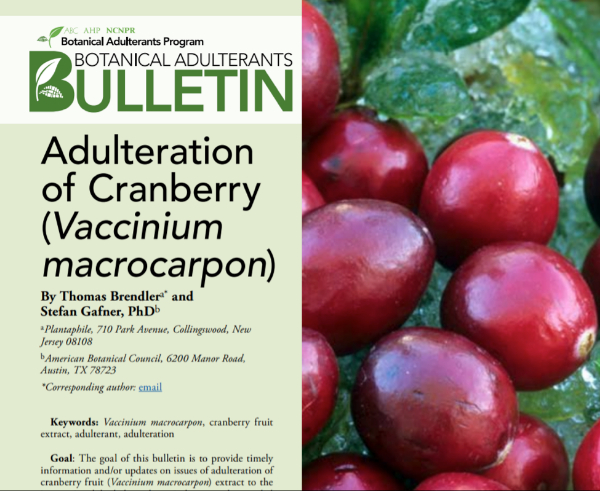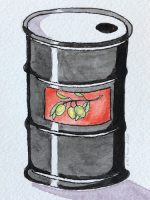Vitamins play a critical role in the regulation of key physiological processes, such as blood clotting, metabolism and maintaining our vision. These biologically important compounds can be divided into two broad classes based on their solubility and differ in the way they are handled in the body—and in food safety laboratories. While excess amounts of water-soluble vitamins (including B1, B2, B3, B6 and B12) are excreted, fat-soluble vitamins (including vitamin A, D, E and K) can be stored in the liver or fatty tissue for later use. The simultaneous analysis of water- and fat-soluble vitamins in traditional liquid chromatography is difficult, and is compounded by the presence of biologically important vitamin isomers, which exist at lower concentrations and demand greater sensitivity from analytical techniques.
Food analysis laboratories support food manufacturers by assessing food safety and authenticity, and have a responsibility to produce precise and reliable data. Vitamins are among a number of compounds assessed in infant formulas, energy drinks and other supplements, and are added to fortify the nutritional value of these products. Given the critical nutritional role of vitamins, especially during early developmental periods, their characterization is highly important. This, along with the challenging and cumbersome nature of vitamin analysis, has spurred the development of innovative high-performance liquid chromatography (HPLC) methods for food safety testing.
Unique Challenges of Vitamin Analysis
The simultaneous analysis of water- and fat-soluble vitamins is difficult to achieve with reversed-phase high-performance liquid chromatography, due to the wide range of hydrophobicity among vitamins. Highly hydrophobic fat-soluble vitamins are retained strongly by chromatography columns and are only eluted with high-strength mobile phases. In contrast, water-soluble vitamins are usually poorly retained, even with very weak mobile phases. As the ideal conditions for chromatographic separation are very different for the two vitamin classes, there have been efforts to explore the possibility of operating two columns sequentially in one system. The early versions of this approach, however, were not well suited to high-throughput food safety laboratories, requiring complex hardware setup and even more complicated chromatography data system programming.
Prior to liquid chromatography analysis, food samples must be purified and concentrated to ensure target analytes can be detected without matrix interference. Liquid-liquid extraction is one purification method used to prepare for the analysis of vitamins and other compounds; it was one of the first methods developed for purification and enables compounds to be separated based on their relative solubilities in two different immiscible liquids.1 It is a simple, flexible and affordable method, yet has several major disadvantages.2 Liquid-liquid extraction consists of multiple tedious steps and requires the use of large volumes, therefore the time for completion is highly dependent on the operator’s skills and experience. Consequently, the duration of sample exposure to unfavorable conditions can vary greatly, which compromises reproducibility and efficiency of the method. This is of concern for vitamins that are particularly prone to degradation and loss when exposed to heat and light, such as vitamin D in milk powder.
Two-Dimensional Liquid Chromatography Enables Deeper and Faster Analysis
Analysts in the food industry are under pressure to process high volumes of samples, and require simple, high-throughput and high-resolution systems. Fortunately, two-dimensional liquid chromatography (2D-LC) systems have evolved markedly in recent years, and are ideally suited for the separation of vitamins and other compounds in food and beverages. There are two main types of systems, known as comprehensive and heart-cutting 2D-LC. In comprehensive 2D-LC, the sample is separated on the first column, as it would be in 1D-LC. The entire eluate is then passed in distinct portions into a second column with a different selectivity, enabling improved separation of closely eluting compounds. In contrast, heart-cutting 2D-LC is more suited to targeted studies as only a selected fraction (heart-cut) of the eluate is transferred to the second-dimension column.
Recently, another novel approach has emerged which utilizes two independent LC flow paths. In dual workflows, each sample is processed by two columns in parallel, which are integrated in a single instrument for ease of use. The columns may offer identical or different analyses to enable a higher throughput or deeper insights on each sample. This approach is highly suited to vitamin analysis, as the two reversed-phase columns enable simultaneous analysis of water- and fat-soluble vitamins. A simple, optimized preparation method is required for each of the two vitamin classes to ensure samples are appropriately filtered and concentrated or diluted, depending on the expected amount of analyte in the sample. The dual approach enables a broad range of ingredients to be assessed concurrently in supplement tablets, energy drinks, and other food and beverages containing both water- and fat-soluble vitamins. For analysts working to validate claims by food vendors, these advances are a welcome change.
Refined Detection and Extraction Methods Create a Boost in Productivity
Analysts in food analysis laboratories now have a better ability to detect a wide range of components in less time, due to improved detection and extraction methods. Modern LC systems utilize a wide range of analytical detectors, including:
- Mass spectrometry (MS)
- Diode array detection (DAD)
- Multi-wavelength detection
- Charged aerosol detection (CAD)
- Fluorescence detection (FLD)
The optimal detector technology will depend on the molecular characteristics of the target analyte. Infant formula, for example, can be analyzed by DAD and FLD, with detection and separation powerful enough to accurately quantify the four isomers of vitamin E, and separate vitamin D2 and D3. Highly sensitive 2D-LC methods are also particularly favorable for the trace level quantitation of toxins in food, such as aflatoxins in nuts, grains and spices.
Given the limitations of liquid-liquid extraction, an alternative, simplified approach has been sought for 2D-LC analysis. Liquid-liquid extraction, prior to chromatography analysis, involves many tedious separation steps. In contrast, the use of solid phase extraction for infant formula testing reduces pre-treatment time from three hours to one hour, while improving detection. This is of great significance in the context of enterprise product quality control, where a faster, simpler pre-treatment method translates into a greater capacity of product testing and evaluation.
HPLC Toolkit for Food Safety Analysis Continues to Expand
Several other HPLC approaches have also been utilized in the field of food safety and authentication. For example, ultra-high-performance liquid chromatography (UHPLC) with detection by CAD followed by principal component analysis (PCA) can be used to investigate olive oil purity. In contrast to conventional approaches (fatty acid and sterol analysis), this revised method requires very little time and laboratory resources to complete, enabling companies to significantly reduce costs by implementing in-house purity analysis. With a reduced need for chemicals and solvents compared with fatty acid and sterol analyses, UHPLC-CAD provides a more environmentally friendly alternative.
Analyzing amino acid content in wine is an important aspect of quality control yet requiring derivatization to improve retention and separation of highly hydrophilic amino acids. Derivatization, however, is labor-intensive, error-prone, and involves the handling of toxic chemicals. To overcome these limitations, hydrophilic interaction liquid chromatography (HILIC) combined with mass detection has been identified as an alternative method. While HILIC is an effective technique for the separation of small polar compounds on polar stationary phases, there still may be cases where analytes in complex samples will not be completely separated. The combination of HILIC with MS detection overcomes this challenge, as MS provides another level of selectivity. Modern single quadrupole mass detectors are easy to operate and control, so even users without in-depth MS expertise can enjoy improved accuracy and reproducibility, while skipping derivatization steps.
Conclusion
Recent innovations in 2D- and dual LC technology are well suited to routine vitamin analysis, and the assessment of other components important in food safety evaluation. The concurrent and precise assessment of water- and fat-soluble vitamins, despite their markedly different retention and elution characteristics, is a major step forward for the industry. Drastic improvements in 2D-LC usability, flexibility and sensitivity also allows for biologically important vitamin isomers to be detected at trace levels. A shift towards simpler, high-throughput systems that eliminate complicated assembly processes, derivatization and liquid-liquid extraction saves time and money, while enabling laboratories to produce more reliable results for food manufacturers. In terms of time and solvent savings, solid phase extraction is superior to liquid-liquid extraction and is one of many welcome additions to the food analysis toolkit.
References
- Schmidt, A. and Strube, J. (2018). Application and Fundamentals of Liquid-Liquid Extraction Processes: Purification of Biologicals, Botanicals, and Strategic Metals. In John Wiley & Sons, Inc (Ed.), Kirk-Othmer Encyclopedia of Chemical Technology. (pp. 1–52).
- Musteata, M. and Musteata, F. (2011). Overview of extraction methods for analysis of vitamin D and its metabolites in biological samples. Bioanalysis, 3(17), 1987–2002.



















